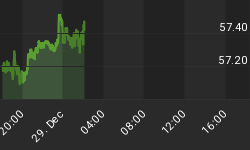Erasmus is reported to have said "experientia magistra stultorum" or for the rest of us who successfully avoided even rudimentary latin instruction "experience is the teacher of fools". What he meant was that a wise person was capable of analyzing the world and avoiding obvious mistakes but that a fool could only learn the hard way - by experience.
According to an interesting study of the 775 fiat currencies that have existed 599 are no longer in circulation. The median life expectancy for the defunct currencies? Fifteen years. Perhaps the author was being unfair by focusing solely on the failures. Sadly no, the average life expectancy of all fiat currency is running at a truly underwhelming 27 years. Only a select few have managed anything approaching old age. The British pound sterling is one such example at over 300 years and counting. Before we get too excited by this apparent example of longevity, at inception the pound was defined as 12 ounces of silver. The pound is now worth less than 0.5% of this original value and of course there is no silver involved anywhere. In other words, the most successful currency in existence in terms of life-span has lost more than 99% of its value.
The study also found that 1 in 5 fiat currencies have failed outright through hyper-inflation - a percentage that I must admit surprised me as I was under the impression that hyperinflation was a much less common occurrence. The following is an excerpt of some of those hyper-inflationary episodes. Full details of each example with precipitating causes can be found here.
- Angola (1991-1999)
- Argentina (1975-1991)
- Austria (1921-1922)
- Belarus (1994-2002)
- Bolivia (1984-1986)
- Brazil (1986-1994)
- Bosnia-Herzegovina (1993)
- Bulgaria (1991-1997)
- Chile (1971-1973)
- China (1939-1950)
- Ecuador (2000)
- Greece (1944-1953)
- Georgia (1995)
- Germany (1923-1924, 1945-1948)
- Greece (1944-1953)
- Hungary (1922-1927, 1944-1946)
- Israel (1979-1985)
- Japan (1944-1948)
- Mexico (2004)
- Nicaragua (1987-1990)
- Peru (1984-1990)
- Poland (1922-1924, 1990-1993)
- Romania (2000-2005)
- Russia (1921-1922, 1992-1994)
- Taiwan (late-1940s)
- Turkey (1990s)
- Ukraine (1993-1995)
- United States (1812-1814, 1861-1865)
- Vietnam (1981-1988)
- Zaire (1989-1996)
- Zimbabwe (1999-2007)
Regardless how it happens, it certainly appears that fiat currencies have a pronounced tendency to fail in de jure or at the very least de facto terms with time being the only relevant variable. Some argue that fiat issued by a dominant economic/military power is the exception to this rule - eg the pound Sterling and the US dollar. While such status certainly seems to extend the life span of a fiat currency, this conclusion surely misses the point that a relentless loss of purchasing power (even if in the currency of the dominant economy) is just a failure in slow motion.
Since one of the key requirements of money is to act as a store of value and fiat currency seems abysmal at this function why do we persist in its use and more importantly who benefits? The answer is obvious - fiat currency is extremely useful to the banking and political classes and so it persists.
For politicians printing money acts as a stealthy tax - a tax for which few voters are likely to blame the political class. Secondly, by reducing the value of the currency, the economy's "measuring stick" so to speak, politicians are able to deceive the voters that their wealth has increased.
Meanwhile, members of the banking class are ideally positioned to take advantage of the confusion between the nominal value of the pool of capital and the pool of capital itself (the "measuring stick" issue again). In simple terms, they can strategically and quickly exchange a declining currency for productive assets while artificially low interest rates act to subsidize their activities. Secondly, through their direct influence over the money printing authorities they can be relieved of the consequences of any mistakes - aka bailouts.
So the simple answer to the question "why print money"? For certain privileged participants a significant amount of wealth can be quietly and almost effortlessly misappropriated. For the rest of us, the expansion of the money supply offers no true benefits and the very real danger that it is our wealth that is misappropriated.
In the spirit of Bastiat, ask yourself if the central banks increased the global money supply 10-fold overnight would we have more farmland, more oil wells, more factories, more of anything other than decimal places in our currency? The nominal price of all these things would likely increase but the size of the capital pool has not changed. How do the money printing programs currently underway differ from this in anything but magnitude?
I believe that the expansive monetary policies underway globally can only serve to fuel speculative activities at this point. Of course, more speculation is exactly the opposite of what is required - someone has to produce something and production requires genuine capital. But since the needs of the political and banking classes largely dictate monetary policy what might we expect in the future? Clearly the sovereign defaults that are underway will not improve bank balance sheets. Therefore, I think we should anticipate additional monetary expansion (bailouts) which is just another way of saying currency devaluation. If history is a guide, the monetary steps that are being taken to "solve" the unfolding sovereign solvency crisis may only serve to morph it into a fully fledged currency crisis with a flight out of financial assets. Do we really want to experience this on a global scale just like the fools Erasmus had in mind?
















